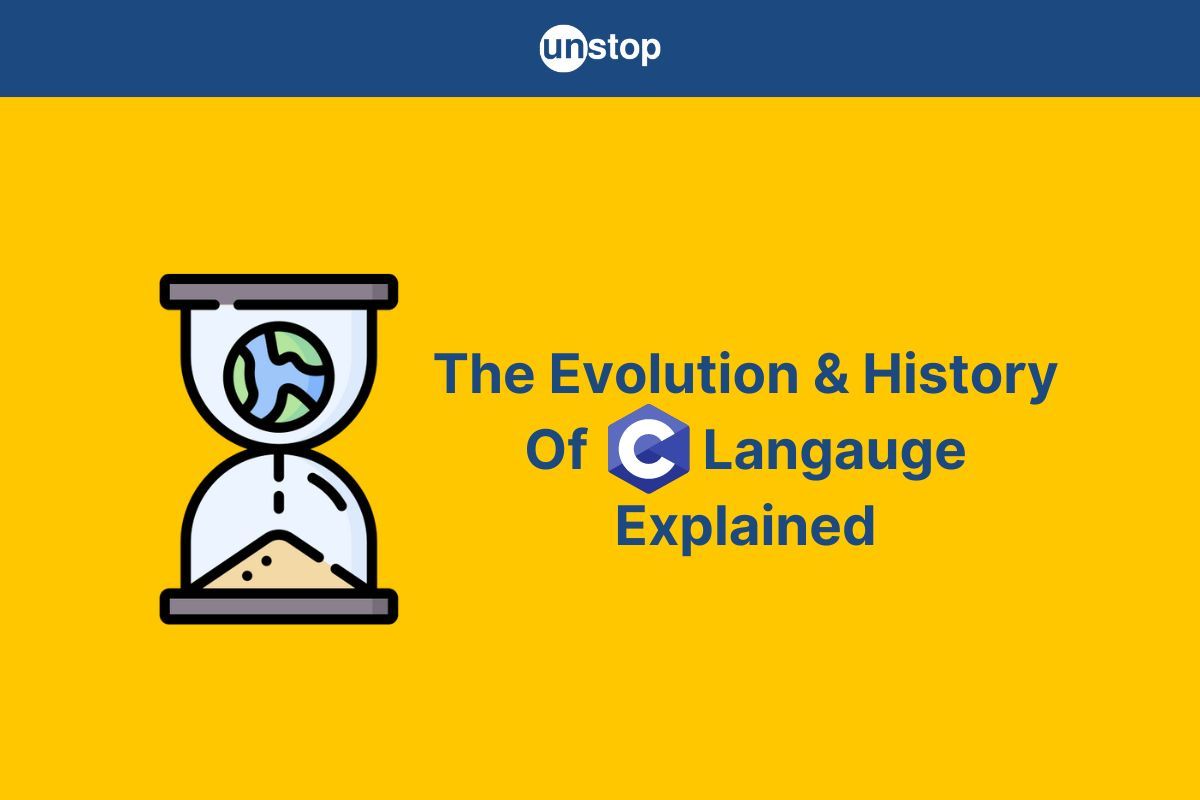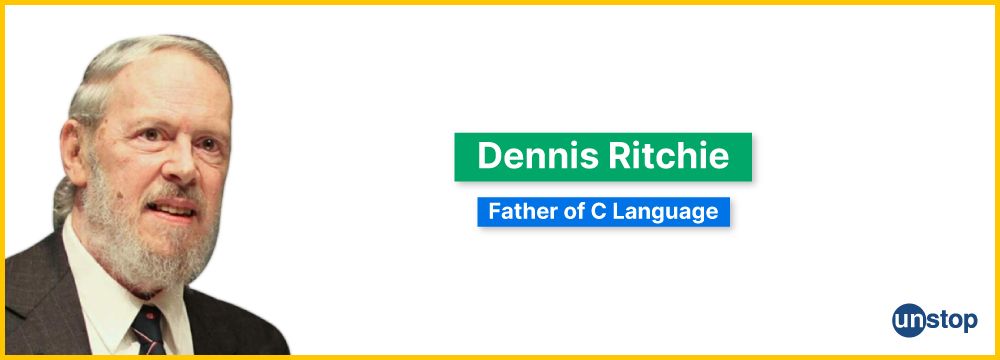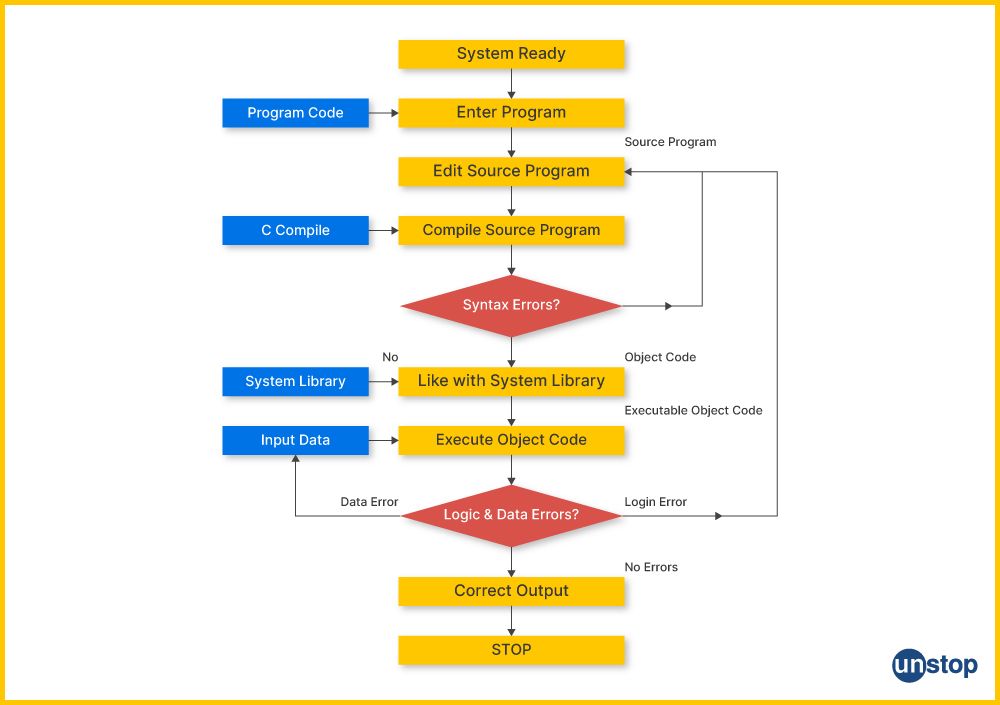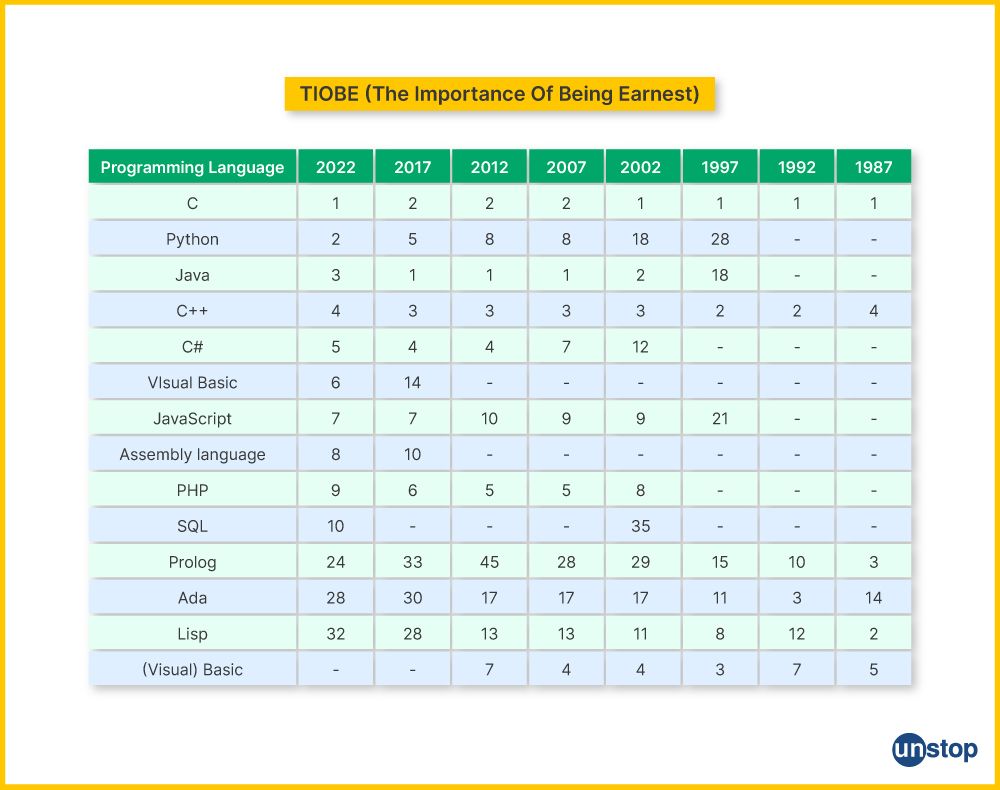Understanding these steps is crucial for developing efficient and effective C programs, as it allows developers to optimize and debug their code with a deeper understanding of how C programs are created and executed.
All Versions of C Language: A Timeline
| Year of Release | Version of C Language | Major Changes | Description |
|---|---|---|---|
| 1972 | C | Initial version | The first release of the C programming language. |
| 1978 | K&R | First book publication, standardization begins |
The first edition of The C Programming Language book was published by Brian Kernighan and Dennis Ritchie. It is often referred to as K&R C, and it served as a reference for the language until a formal standard for the same was established. |
| 1989 | C-89/ ANSI C | Features such as function prototypes, void pointers, standard libraries, etc. were added. |
The American National Standard Institute (ANSI) standardized the language (ISO/IEC 9899:1990 was the first international standard for the language). |
| 1990 | C-90 | Minor updates and fixes | Minor revisions to the C89 standard. |
| 1999 | C-99 | Variable length arrays, new data types (e.g., long long int), and inline functions. | Introduced new features for improved functionality and portability. (Formal standard- ISO/IEC 9899:1999) |
| 2011 | C-11 | Multi-threading support, atomic operations, improved Unicode support |
Expanded the language to support modern programming needs. (Formal standard- ISO/IEC 9899:2011) |
| 2018 | C-18 | Minor updates and fixes | Minor revisions to the C11 standard. (Formal standard- ISO/IEC 9899:2018) |
It is to be noted that while these are the official versions of the C language, different compilers, and platforms may have varying levels of support for these versions. Additionally, some features that are widely used in C programming, such as the use of the preprocessor, are not part of the official language standard. Moreover, some people consider the C-90 language to be the same as C-89, as the differences between the two versions are relatively minor. Similarly, some people refer to C17 instead of C18, but the 2018 version is the most recent standard as of the knowledge cutoff of this model.






















Comments
Add comment